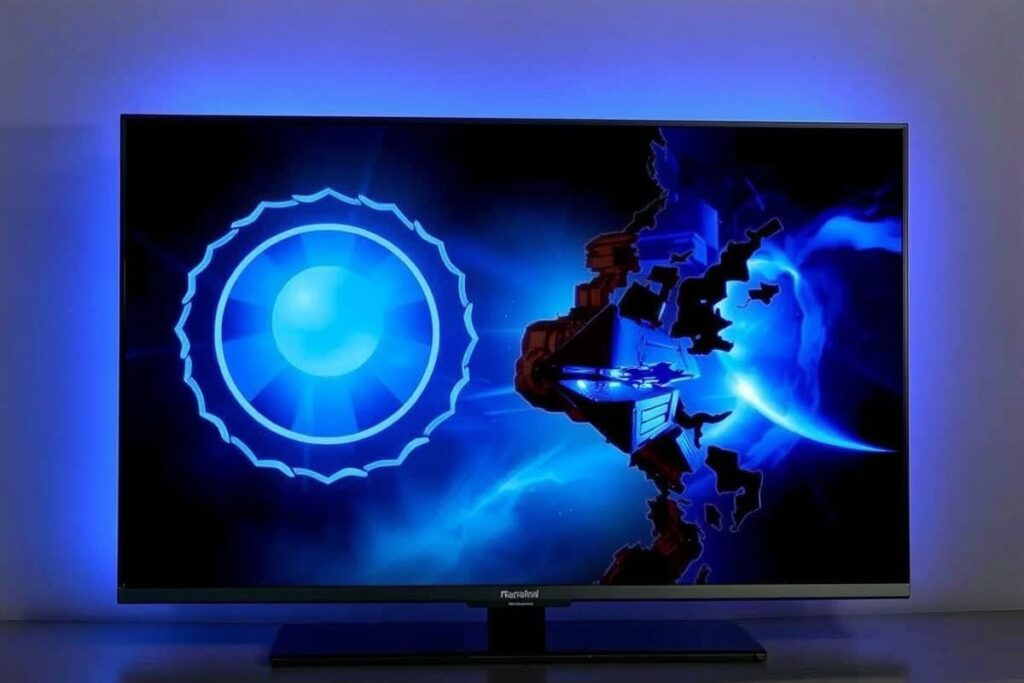Are you ready to level up your gaming experience with a brand new TV? That shiny new display promises immersive visuals and lightning-fast response times. But before you rush to checkout, beware the lurking dangers of warranty traps, especially those concerning burn-in damage. Burn-in, the persistent ghost image of static elements like HUDs or channel logos, can be a gamer’s worst nightmare. While manufacturers tout comprehensive warranties, the fine print often reveals hidden exclusions that leave gamers footing the bill for costly repairs. This article delves into the murky world of gaming TV warranty traps, arming you with the knowledge you need to protect your investment. Understanding these exclusions is crucial, whether you’re a casual console gamer or a hardcore PC enthusiast. Don’t let a faulty warranty ruin your gaming bliss; read on to learn how to navigate these potential pitfalls.

Decoding Gaming TV Warranty Small Print
The Burn-In Battle: What Manufacturers Don’t Tell You
Burn-in is a significant concern for gamers. Extended gameplay often involves static on-screen elements. This can lead to permanent image retention, effectively ruining your viewing experience. Manufacturers often downplay the risk, focusing on the vibrant picture quality and advanced features.
However, warranty exclusions related to burn-in are common. Many warranties explicitly state that burn-in resulting from “static images” or “stationary content” is not covered. This leaves gamers vulnerable, especially those who enjoy specific genres with persistent HUDs.
Understanding the specific wording used in your warranty is paramount. Look for terms like “image retention,” “screen burn,” or “pixel damage.” These can all indicate potential exclusions related to burn-in.
Commercial Use vs. Personal Use: A Gray Area for Gamers
Some manufacturers classify extended gaming as “commercial use,” voiding warranty coverage for burn-in. This is a contentious issue, as many gamers use their TVs solely for personal entertainment.
Defining “commercial use” is often subjective. Streaming gameplay or participating in esports tournaments could be misinterpreted as commercial activity. This ambiguity puts gamers at a disadvantage when seeking warranty repairs.
If you stream or participate in competitive gaming, clarify with the manufacturer how your usage is classified under their warranty terms. Document your communication to have evidence in case of a dispute.
Protecting Your Investment: Navigating the Warranty Maze
Scrutinize the Warranty Before Purchase: Don’t Get Caught Off Guard
Before buying a gaming TV, carefully examine the warranty terms and conditions. Pay close attention to sections related to burn-in, pixel damage, and commercial use. Don’t hesitate to contact the manufacturer to clarify any ambiguous language.
Compare warranties across different brands and models. Some manufacturers offer more comprehensive coverage than others. A slightly higher upfront cost for a better warranty could save you significant expense in the long run.
Consider purchasing an extended warranty from a reputable third-party provider. These warranties can offer additional protection beyond the manufacturer’s standard coverage. However, carefully review the terms of the extended warranty to ensure it addresses burn-in damage.
Best Practices to Minimize Burn-In Risk: Proactive Prevention
While a solid warranty is essential, taking proactive steps to minimize burn-in risk is equally important. Regularly varying your gameplay and content can prevent static elements from becoming permanently etched onto your screen.
Adjusting the TV’s brightness and contrast settings can also help. Lower brightness levels reduce the intensity of light emitted by the pixels, minimizing the risk of burn-in. Enable screen savers or dynamic backgrounds during periods of inactivity.
Be mindful of static elements in games and streaming services. Whenever possible, adjust HUD settings to minimize their on-screen presence or utilize features that periodically shift their position.
Choosing the Right Gaming TV: Balancing Features and Protection
Prioritize Panel Technology: OLED vs. LED
Different panel technologies have varying susceptibility to burn-in. OLED TVs, while offering superior picture quality, are generally more prone to burn-in than LED TVs.
LED TVs, especially those with local dimming, offer a good balance between picture quality and burn-in resistance. Consider your gaming habits and budget when choosing between OLED and LED.
Research specific models and their reported burn-in performance. Online forums and reviews can provide valuable insights from other gamers who have experienced these issues firsthand.
| Feature | Importance |
|---|---|
| Warranty Coverage for Burn-In | Crucial |
| Panel Technology | High |
| Response Time | High |
| Refresh Rate | High |
- Always read the fine print of the warranty.
- Vary your gameplay to avoid static images.
- Adjust brightness and contrast settings.
The pursuit of the perfect gaming experience shouldn’t be marred by warranty woes. By understanding the common pitfalls and adopting preventative measures, you can protect your investment and enjoy countless hours of immersive gameplay. Remember, a well-informed gamer is a well-protected gamer. Choose wisely, game on, and don’t let burn-in ruin your fun.

Leave a Reply